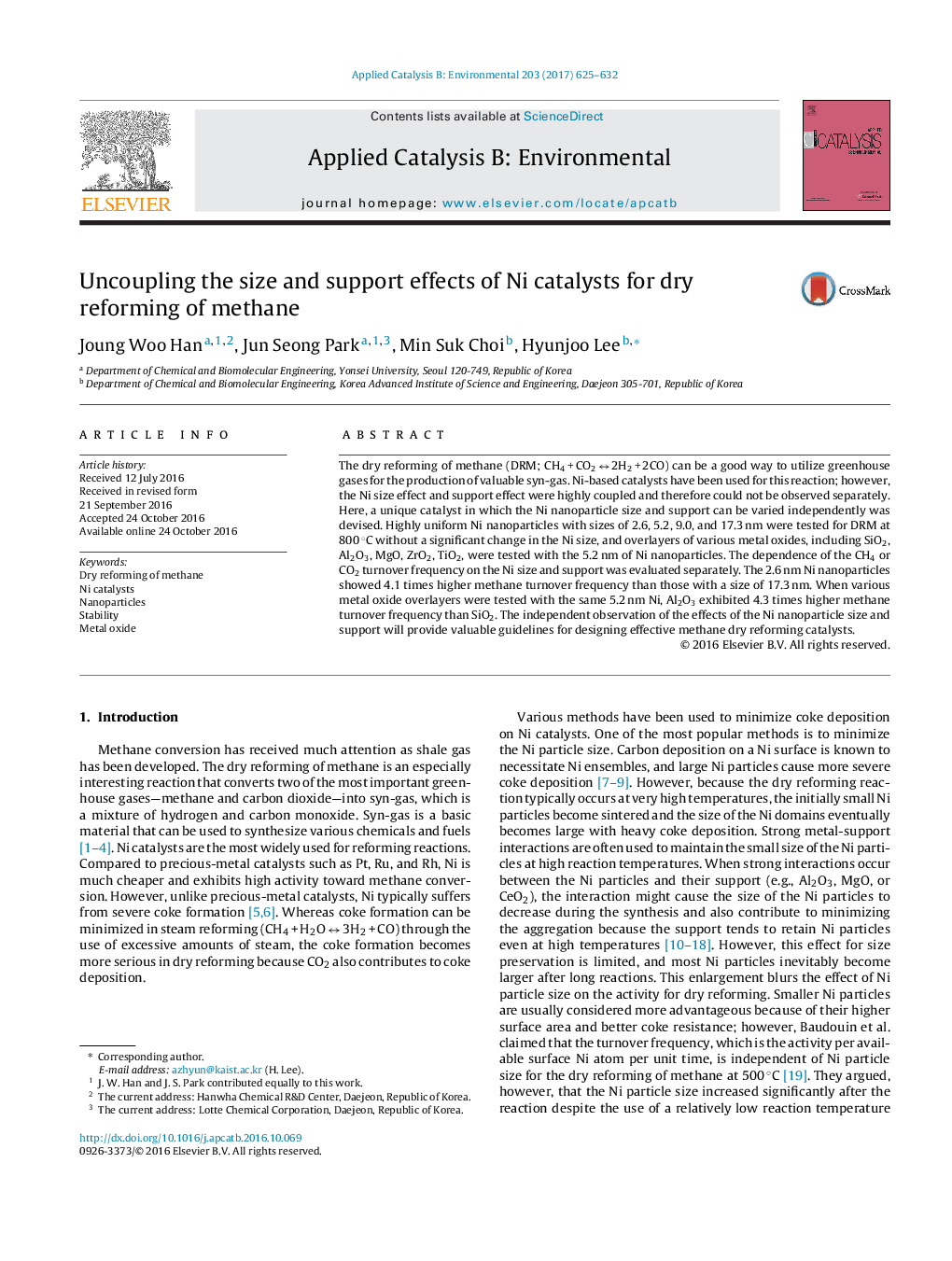| Article ID | Journal | Published Year | Pages | File Type |
|---|---|---|---|---|
| 6454540 | Applied Catalysis B: Environmental | 2017 | 8 Pages |
â¢The effect of Ni size and support has been decoupled and evaluated separately for dry reforming of methane.â¢Smaller Ni nanoparticles (2.6 nm) showed higher CH4 turnover frequency than larger Ni nanoparticles (17.3 nm).â¢Alumina and MgO supports showed much higher CH4 turnover frequency than silica support when the same size of Ni nanoparticles were used.
The dry reforming of methane (DRM; CH4 + CO2 â 2H2 + 2CO) can be a good way to utilize greenhouse gases for the production of valuable syn-gas. Ni-based catalysts have been used for this reaction; however, the Ni size effect and support effect were highly coupled and therefore could not be observed separately. Here, a unique catalyst in which the Ni nanoparticle size and support can be varied independently was devised. Highly uniform Ni nanoparticles with sizes of 2.6, 5.2, 9.0, and 17.3 nm were tested for DRM at 800 °C without a significant change in the Ni size, and overlayers of various metal oxides, including SiO2, Al2O3, MgO, ZrO2, TiO2, were tested with the 5.2 nm of Ni nanoparticles. The dependence of the CH4 or CO2 turnover frequency on the Ni size and support was evaluated separately. The 2.6 nm Ni nanoparticles showed 4.1 times higher methane turnover frequency than those with a size of 17.3 nm. When various metal oxide overlayers were tested with the same 5.2 nm Ni, Al2O3 exhibited 4.3 times higher methane turnover frequency than SiO2. The independent observation of the effects of the Ni nanoparticle size and support will provide valuable guidelines for designing effective methane dry reforming catalysts.
Graphical abstractDownload high-res image (165KB)Download full-size image
